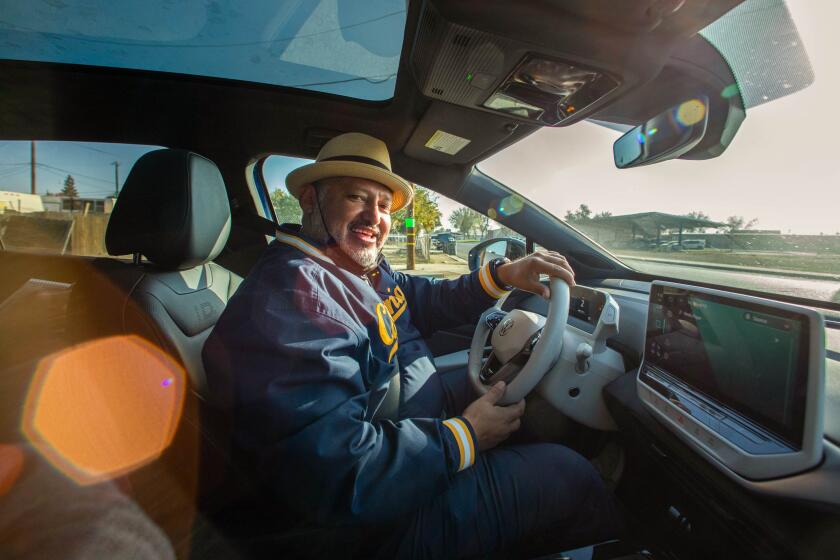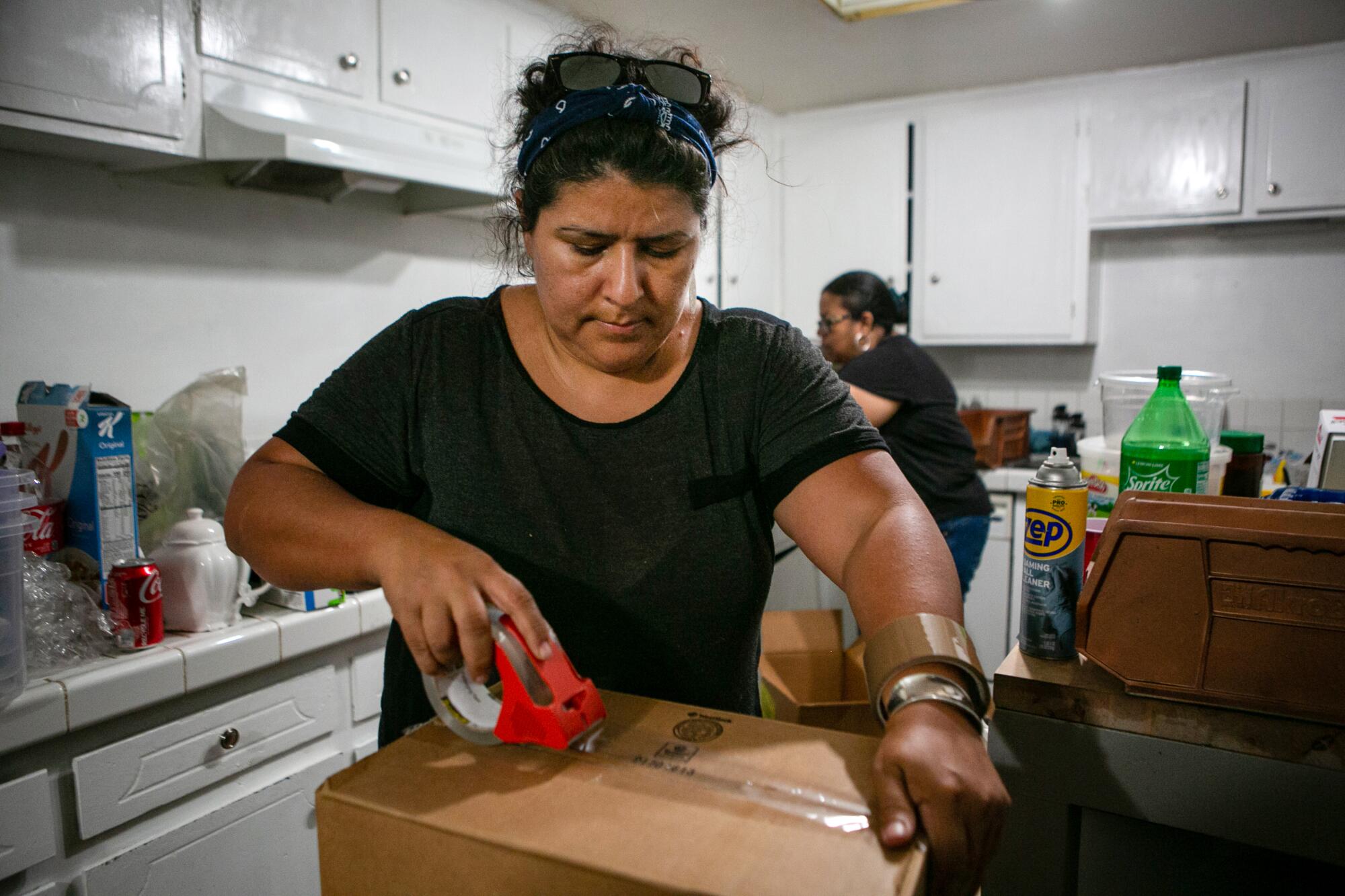
- Share via
Luz Puebla began the long drive north, her three younger children piled into their old minivan.
Ahead, her husband and oldest son led the way in a U-Haul, 10 years of their lives packed inside.
On the Golden State Freeway, Puebla glanced at the downtown Los Angeles skyline.
“Look,” she said. “It might be the last time you see the city in some time.” There was no response from her kids, who had nodded off to sleep.
They drove through the Tejon Pass, through miles of valleys, then orchards sprinkled with fruit trees and “Recall Newsom” signs.
Like so many immigrants before her, Puebla had come to Los Angeles with little more than a change of clothes and a vision of a grand, wealthy place where her dreams could come true.

But in recent years, it seemed as though she and her husband, Eliazar Cabrera, couldn’t get ahead.
The rent on their South Gate apartment was set to increase. In the COVID-19 pandemic, Cabrera’s hours as a maintenance man were cut.
Not only were they failing to save money, but they also were sinking further into debt.
Their door was feet away from a busy street. Crime and homelessness seemed to be getting worse. With the kids home all day learning online, their apartment seemed too small.
So on a fall day last year, they headed to Huron, a town of 6,000 with no stoplights, surrounded by grape fields and pistachio groves.
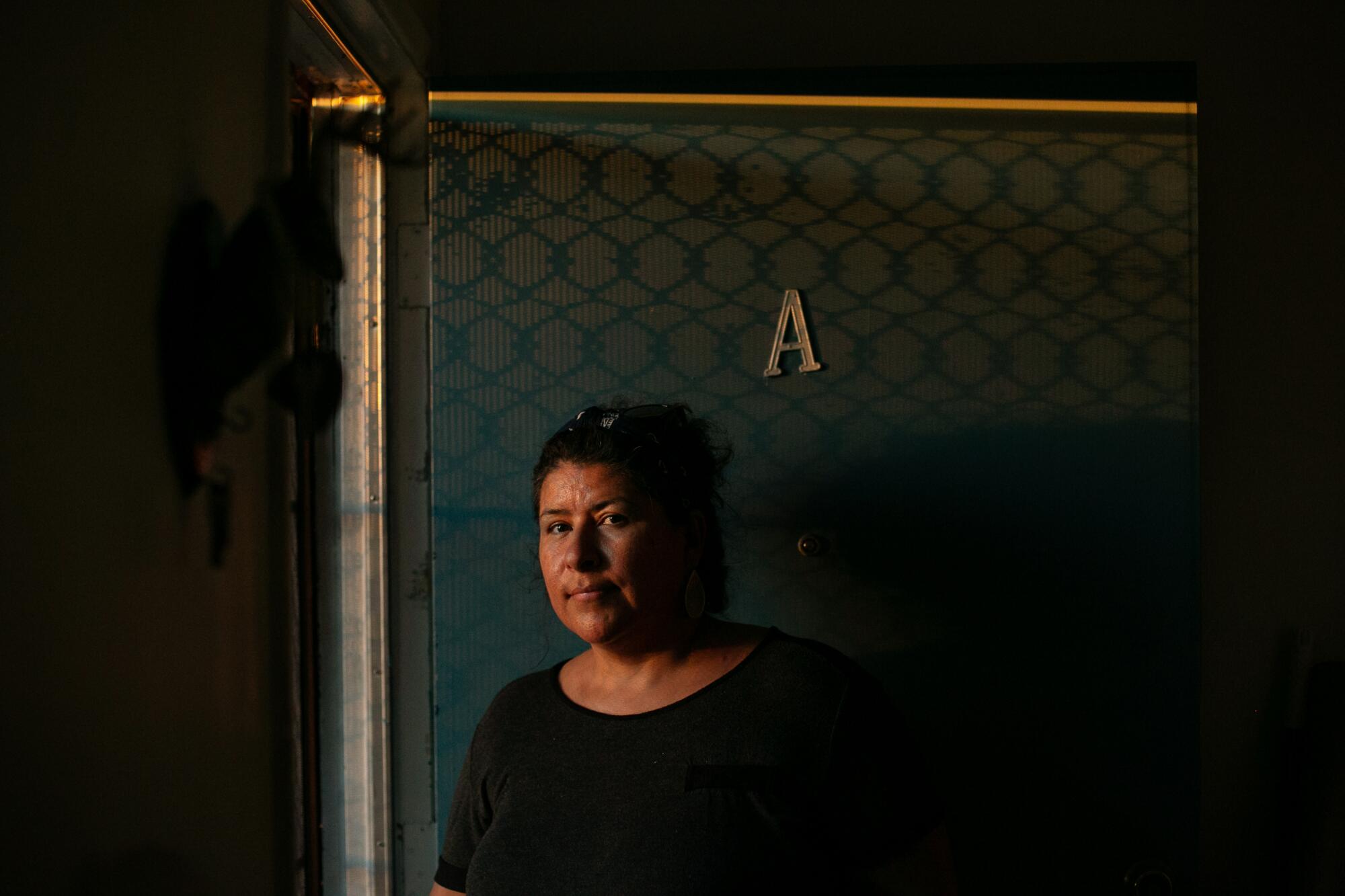
While some urban dwellers fled to less crowded regions during the pandemic, working-class immigrants have largely stayed put, tied to jobs that required them to show up in person, as well as the extensive social networks of the big city.
Puebla, 44, is among the relatively few who have left, turning away from Los Angeles, long a beacon for immigrants from Latin America and Asia.
People questioned the decision. What would the kids do for fun? They might not have the same shot at success.
But Puebla and her husband decided that Huron held more opportunity.
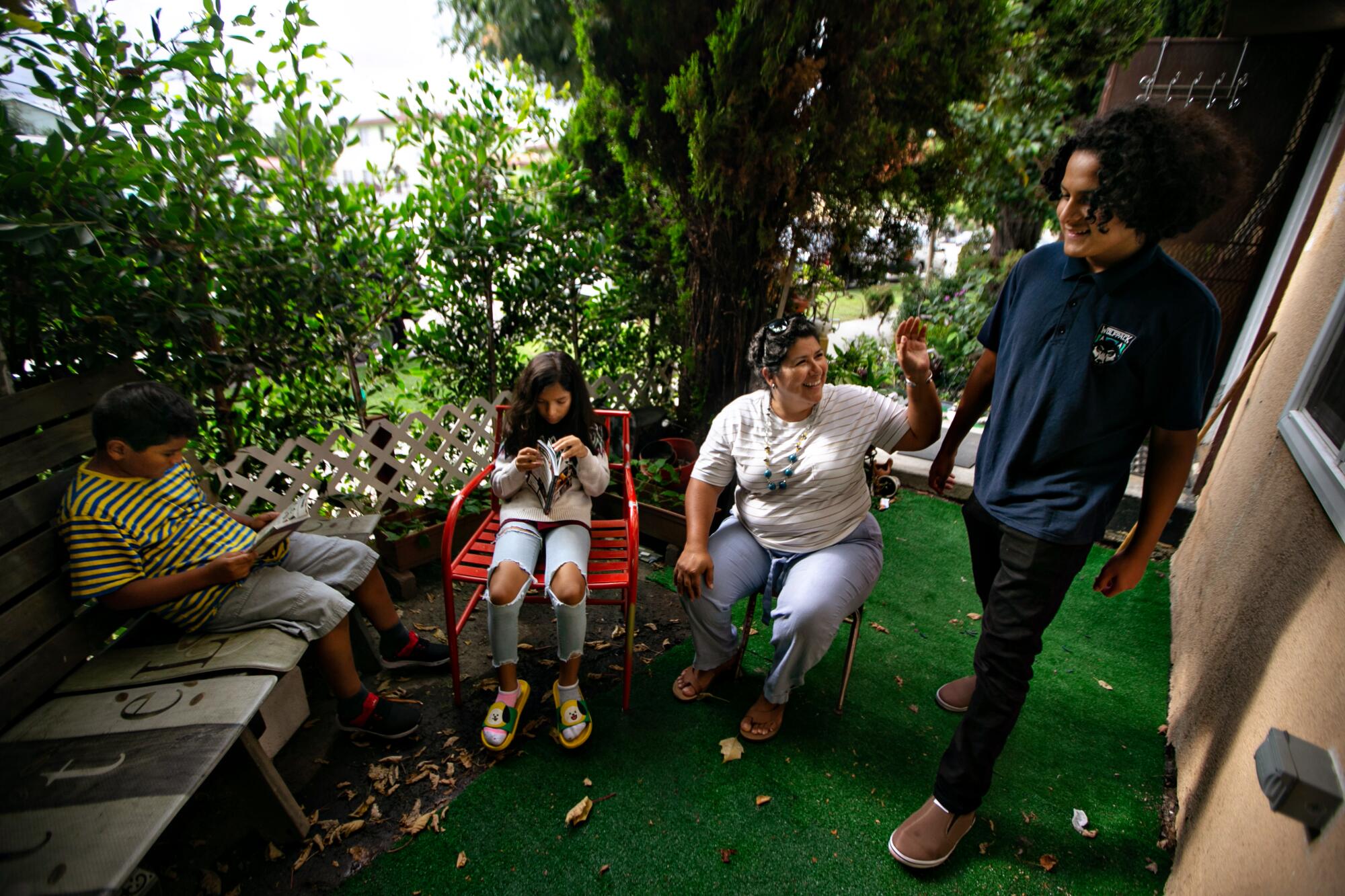
Puebla arrived in L.A. in 2004, eight months pregnant and fleeing from a boyfriend’s threats. In a bag, she carried a pair of socks and a change of clothes.
An English teacher in her native Guadalajara, she hoped to teach in the U.S.
Her godmother in L.A. had pressed her to come. Her father also lived in the city, though he was homeless and surrounded by bad company.
They ended up not being of much help. Puebla started her American life with no place to live.
After couch surfing, she found a job cleaning houses with the help of a nonprofit called Elizabeth House. She eventually rented a small apartment in Pasadena with baby Ethan.
She met Cabrera when he came to fix her toilet. As their family grew, they settled in South Gate.
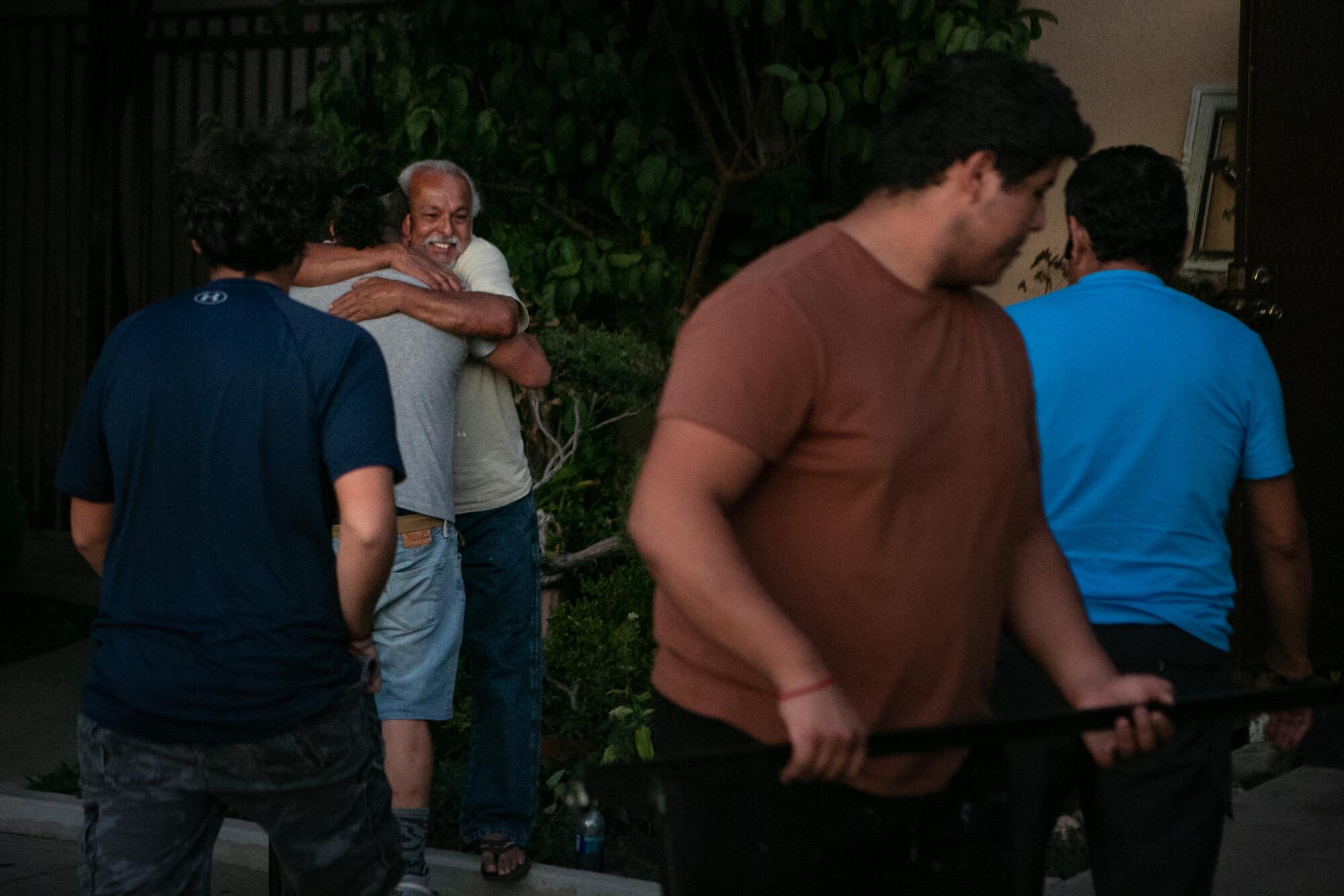
For 10 years, Puebla built the life of her dreams in their two-bedroom apartment.
Early each morning, she descended the stairs to get a head start on cooking.
She fed her soul by meditating, practicing qigong or doing crafts.
As a former teacher, she made the apartment into a classroom, which during the pandemic included Spanish lessons and painting.
Once a majority-white industrial community, South Gate is now 96% Latino after many residents decamped to the suburbs in the 1970s and ‘80s.
“It’s affordable and close to the kind of jobs that Latinos will do in L.A., like janitorial services, landscaping and construction,” said Luis Nuño, a sociology professor at Cal State Los Angeles. “People move to where there are jobs and where they can afford to live.”
It was the kind of place where Puebla and Cabrera could gain a foothold, with fellow immigrants offering social support.
Cabrera, who immigrated to California from Mexico in the 1980s, taught himself maintenance and carpentry work, eventually moving into building management. In 2016, he became a legal permanent resident, while Puebla has remained without papers.
For a decade, Puebla’s family got by mostly on her husband’s salary. She managed their apartment building in exchange for cheaper rent — $1,000 instead of $1,700 for a similar two-bedroom unit.
The rent inched higher, along with gas.
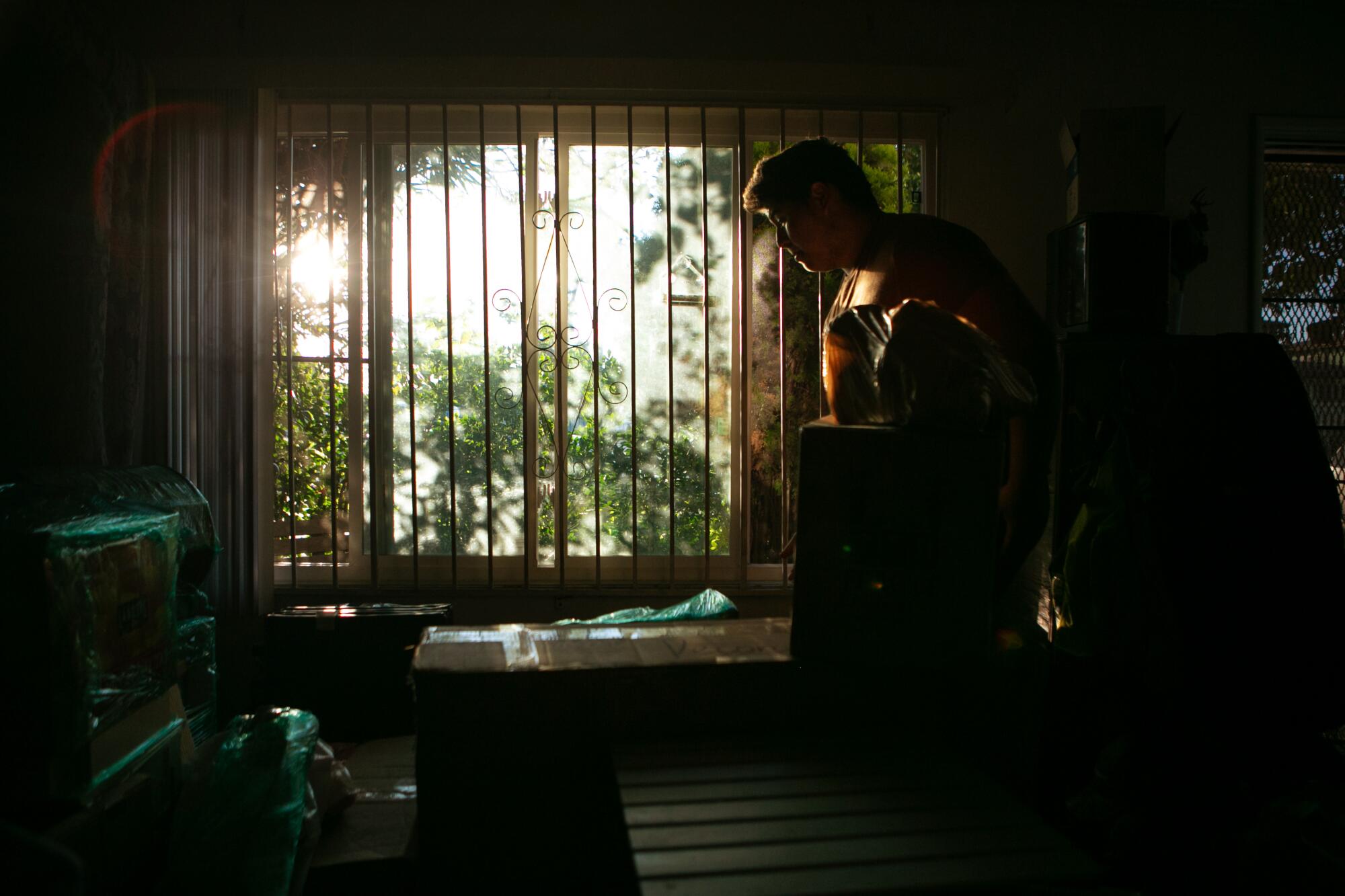
The pandemic pushed them closer to the edge. With repairs inside apartments put off to avoid transmitting the virus, Cabrera’s hours were cut. Their debt skyrocketed to more than $25,000.
The kids — three boys and a girl, ages 9 to 17— grew restless and bored with Zoom school and few chances to leave the house. Puebla did what she could to entertain them.
Recently, more homeless people were walking through the neighborhood. There was an uptick in shootings, and two cars were set ablaze.
“Where we live, we started to see more violence. More aggression. We used to feel confident when sending our kids to the local 7-Eleven or the corner store,” Puebla said.
One day in September, Cabrera’s phone rang. It was an apartment manager from Huron.
On a quail hunting trip to the area, they had told friends about their struggles and asked for job referrals.
That was many months ago. Now, the caller was asking whether Cabrera wanted to be a full-time maintenance manager, starting right away.
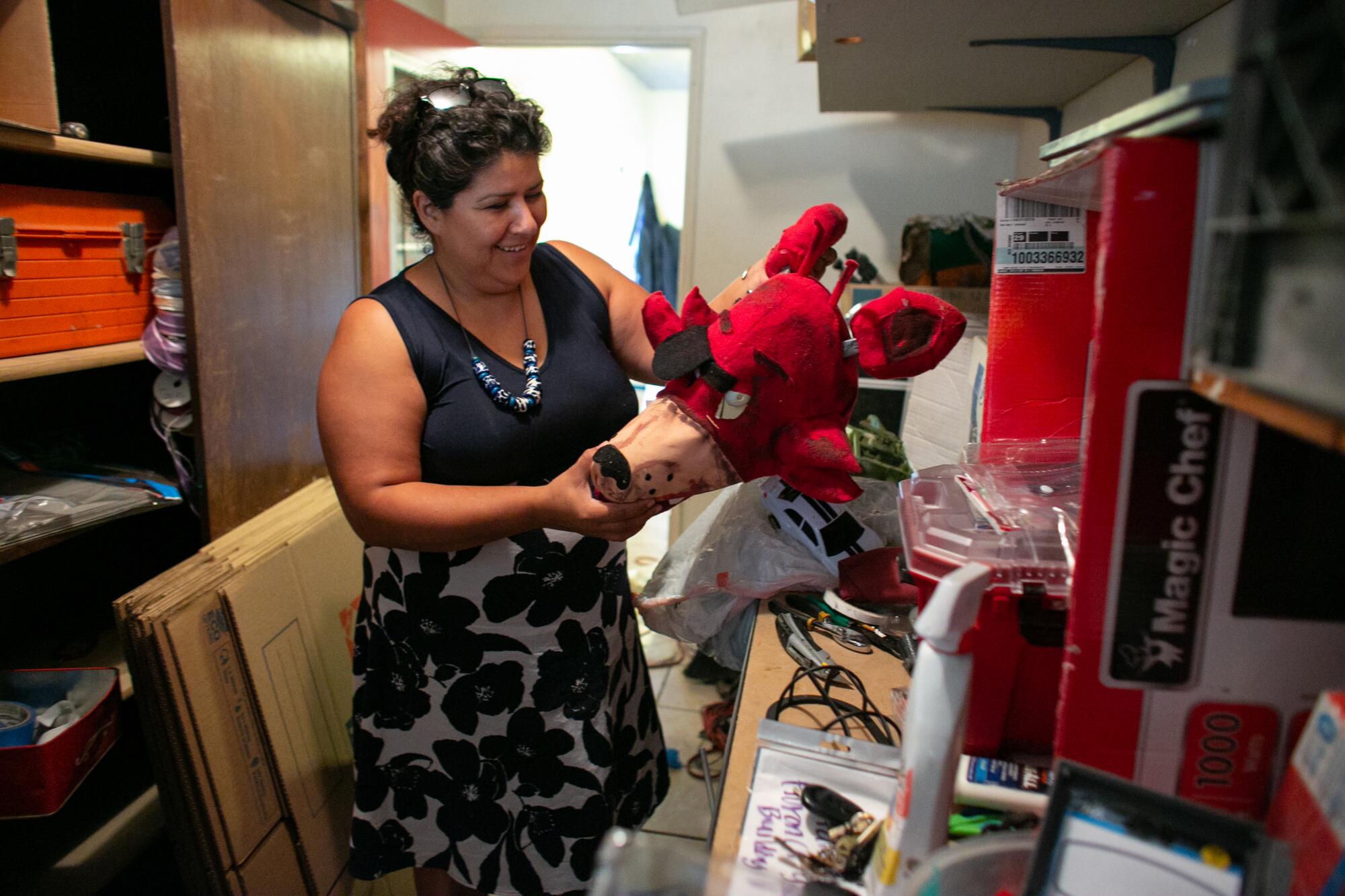
The family didn’t hesitate. Puebla believed the job offer was a sign from God. The apartment complex was just a few years old, and they would get a three-bedroom unit at no cost.
As Puebla did the final sweeping and mopping, she thought back to the Christmases and Thanksgivings they had shared around the dining table.
Pencil markings on the wall tracked her kids’ heights over the years. Their two cats, Tato and Tata, roamed among cardboard boxes.
Puebla took out her phone and recorded a blurry image of herself.
“Here we are, in this house,” she said, her eyes wet. “Where my kids were raised. My home.”
The decision to leave and the leave taking had been a whirlwind — about two weeks start to finish.
After five hours on the road, they arrived at their new home in the early morning hours of Oct. 3.
Across the street, a vast plot of dirt went on for miles. They could hear the wind whistling. Smoke from wildfires in the distant mountains clogged the air.
The surge of migration eastward fits a pattern of families escaping densely populated cities, a trend that dates back to the mid-20th century.
It was a journey many immigrants and children of immigrants had taken in reverse — from the fields to the city the first chance they got.
For Puebla, after a decade in crowds and traffic, the open space was freeing.
“It was as if I took off one of those Colombian spandex off my waist,” Puebla said. “Like I could breathe again. As far as your eyes can see, it’s a feeling of abundance and freedom.”
She dreamed of her own garden and wide-open spaces for her children to play. She prided herself on being environmentally conscious and fantasized about a life that was self-sustaining.
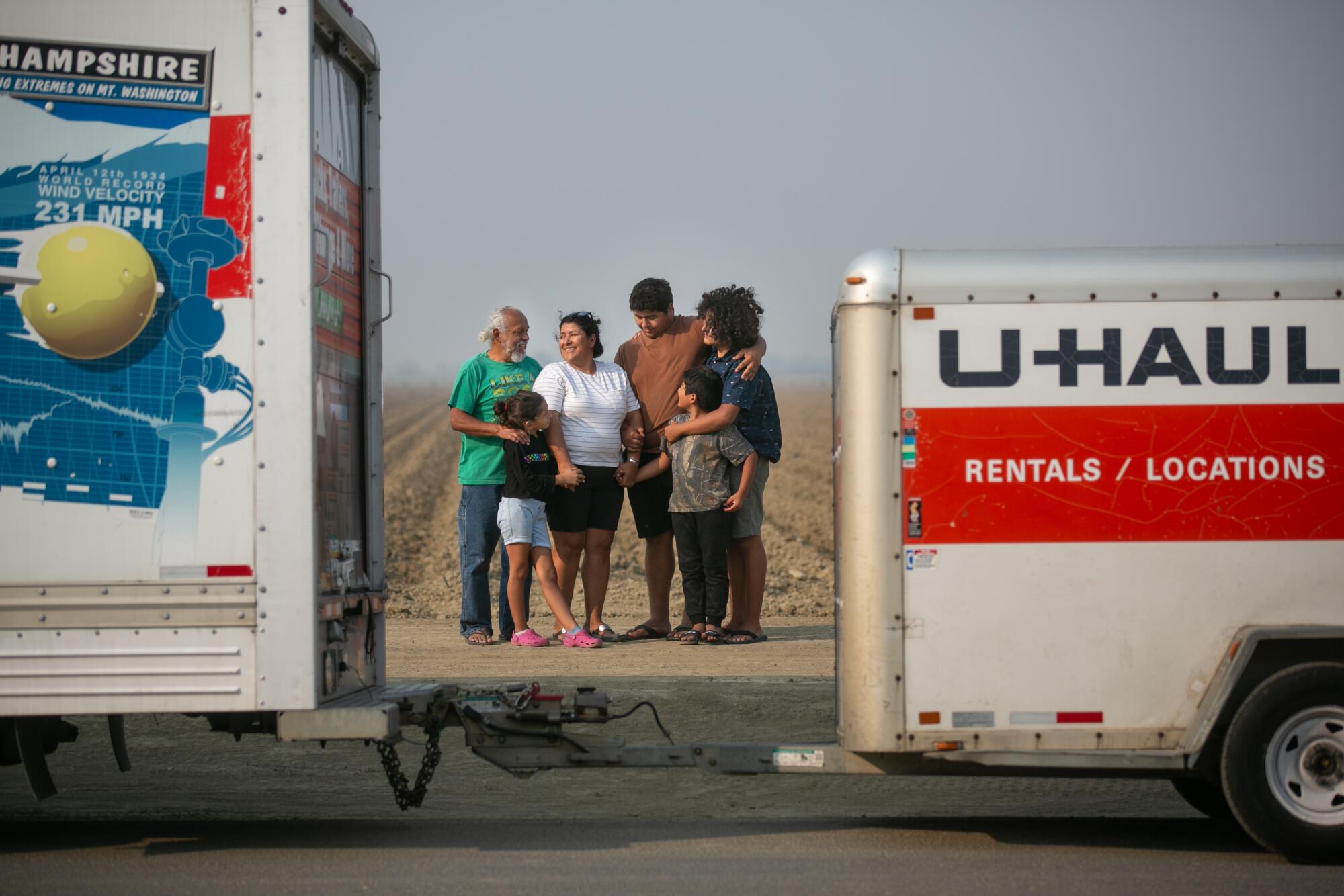
Huron’s population fluctuates with the seasons. It’s a town of migrant farmworkers, mostly Latino. The main strip is lined with a couple of gas stations, grocery stores and small businesses — carnicerias, panaderias, taquerias.
There is an elementary school and a continuation school but no high school. Ethan, 17, and Ebani, 15, would have to take a bus to Coalinga, 19 miles away.
Getting low-income communities to transition to electric cars is a key climate challenge for California and the nation. A rural city is paving the way.
They unloaded all their belongings into their second-floor apartment, spread blankets on the floor and went to sleep, exhausted.
The following day, they pieced their new home together.
Ebani and Ethan took one room, arguing over which side each would take and how to configure the twin beds and dressers. Eros, 10, and Evolet, 9, took the other room.
Cabrera grabbed Puebla’s face and brought her close to him for a kiss. They lifted Eros’ mattress onto its frame.
Eros, who in South Gate had said he didn’t want to leave his friends, now exclaimed, “I’m happy!”
Evolet joyfully ran throughout the complex, introducing herself to other children, with Eros right behind her.
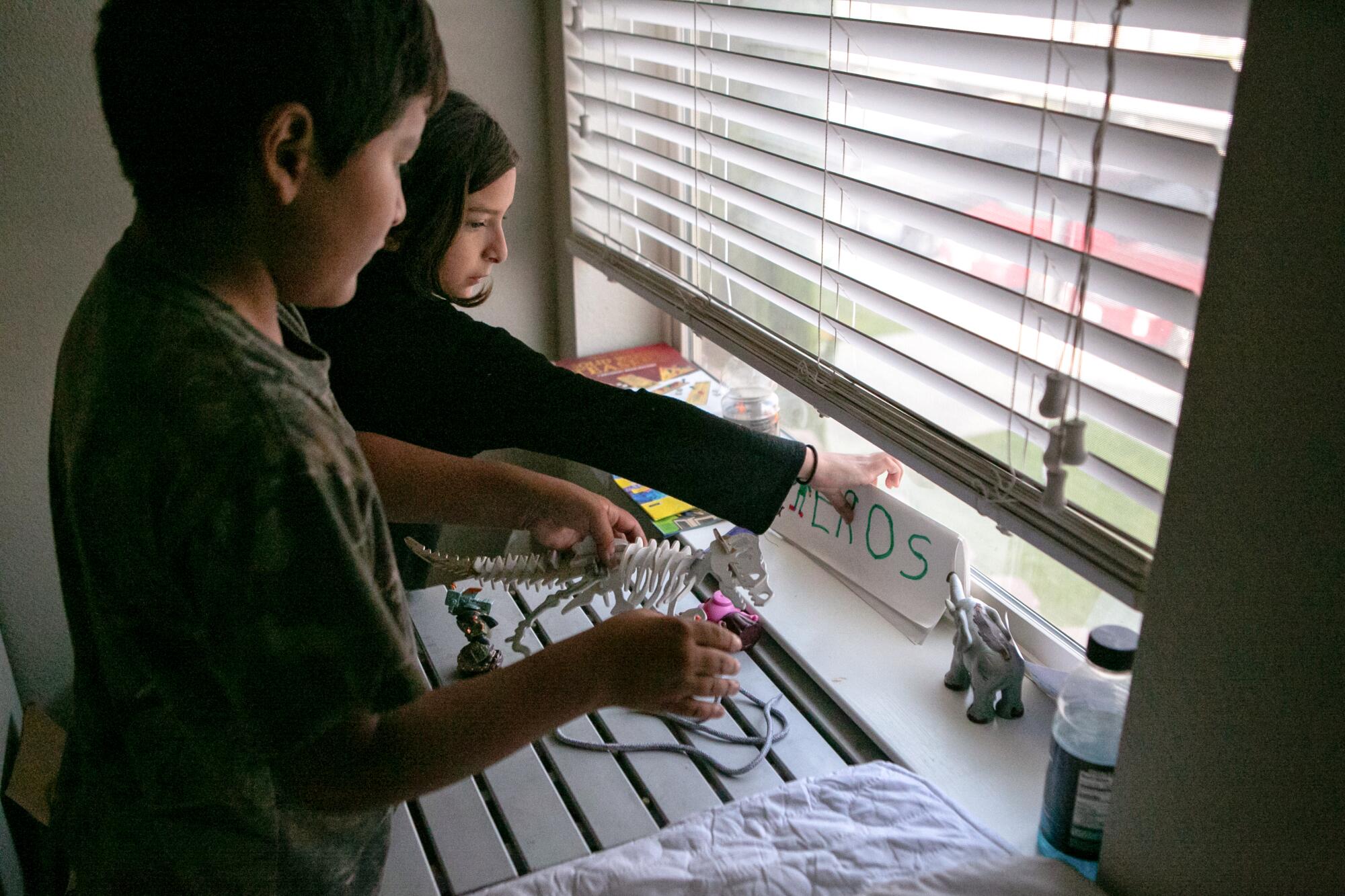
“I already have two friends,” she told her mom.
Ebani said he didn’t mind his new home.
“It’s all right,” he said quietly. “I like nature better than the city. Everything that I couldn’t do over there, I can do here. Like I can go outside. I can go to the park with my friends.”
Ethan, who in South Gate was a star football player with good grades, said he did not resent his parents’ decision to move.
What must it have been like for them to leave their home country for a new one, not knowing the language?
Surely, if they can do that, he can handle a year or two in Huron. And then he’ll head back to L.A.
“All I’ve known is the city,” he said. “Once I become independent, 18 with a license and car, graduated, I’m going to college back there.”
The little town was growing. Puebla hoped to land a gig managing a new property nearby. She dreamed of buying a building of her own and renting it out.
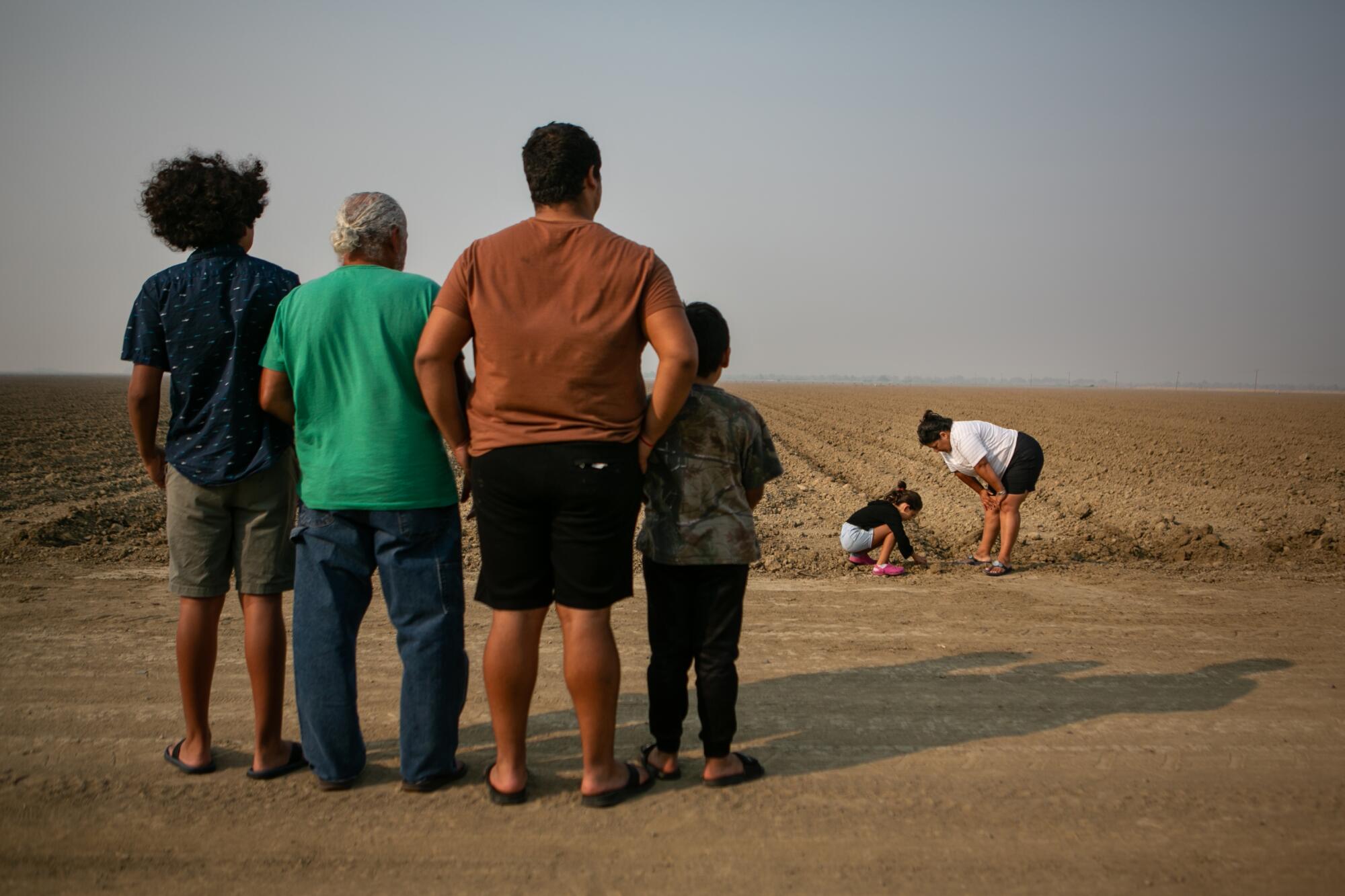
Then, reality set in.
The kids were bored. There were no after-school activities. Even the advanced classes weren’t challenging.
The family quickly tired of the food options — seven taquerias and one pizza shop, by their count.
They felt different from the locals, who listened to ranchera and wore either cowboy boots and sombreros or saggy pants with chains.
Their three-bedroom apartment wasn’t as big as they expected. There wasn’t room for all their things.
Subscribers get early access to this story
We’re offering L.A. Times subscribers first access to our best journalism. Thank you for your support.
Despite the free rent, they weren’t able to save money. The cost of moving had set them back. Food and other necessities were expensive in Huron, and driving to Hanford meant spending money on gas.
For Christmas, Puebla saved a few gift cards from Elizabeth House. With a couple of hundred dollars, she figured she could get her kids one big gift.
When they asked for a PlayStation 4, she felt deflated — it was beyond her budget.
Instead, Eros and Evolet each got a hairbrush, Ebani a nail-cutting set, Ethan a wallet, her husband some socks.
A few months later, Puebla’s indoor plants died. It was a sign, she thought.
She wouldn’t be starting a garden here. She was thinking about moving to Fresno.
More to Read
Sign up for Essential California
The most important California stories and recommendations in your inbox every morning.
You may occasionally receive promotional content from the Los Angeles Times.

